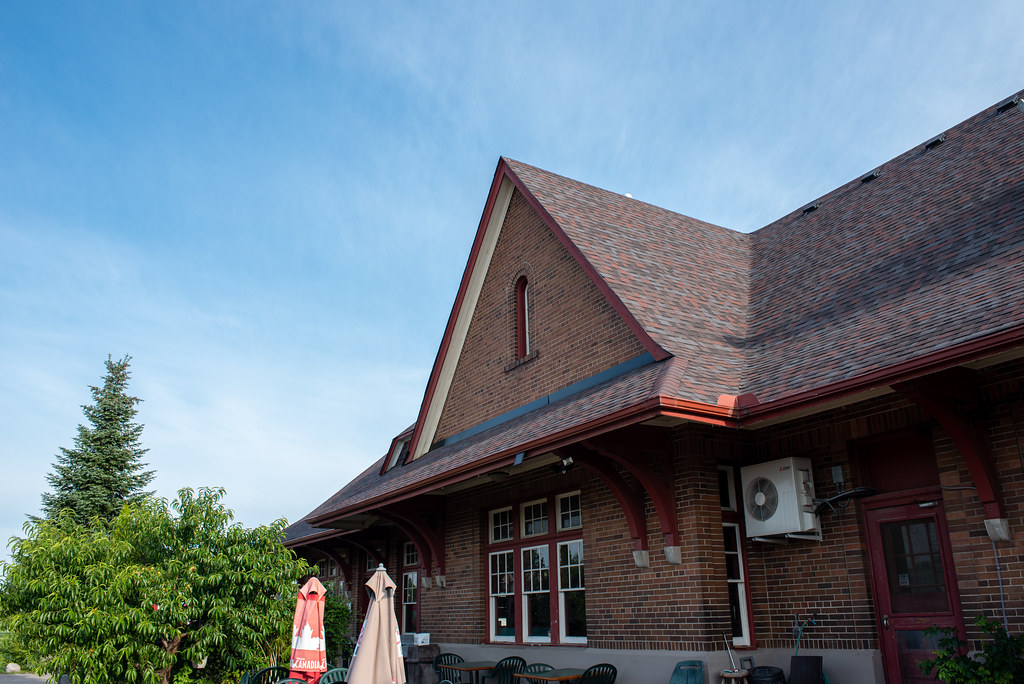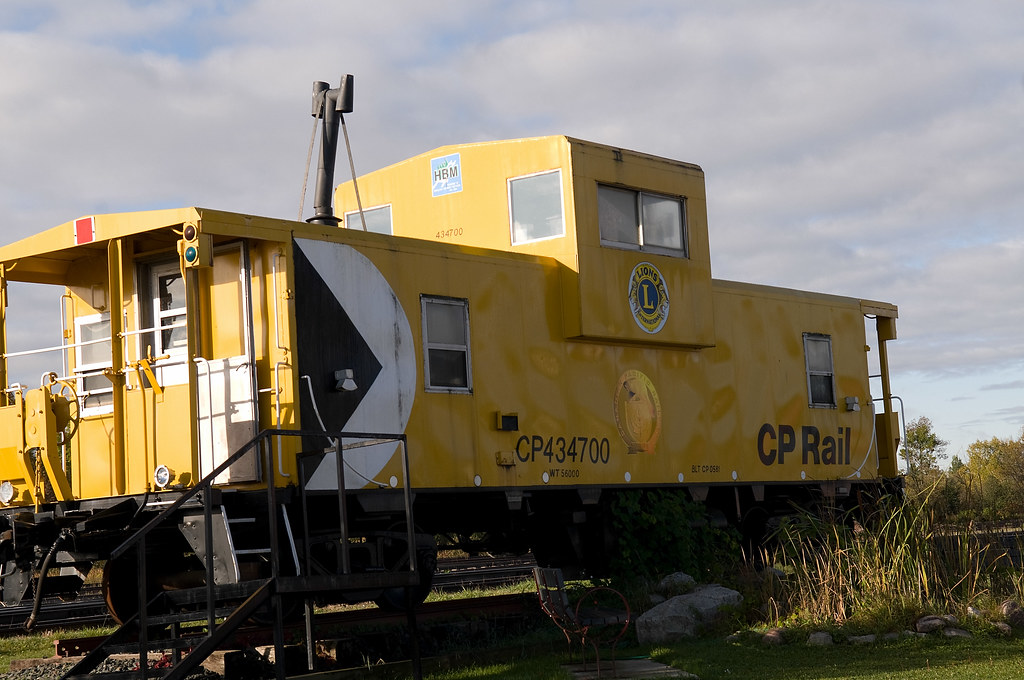The first time I drove past the old Havelock station, I was more interested in a pair of old Angus Van Cabooses, one in good condition sitting proudly next to Highway 7, the other looking worse for wear back in the rail yard. I got a couple of shots of those and one of the old stations. But at that time, I did not know the rich heritage of the area and its relation to the station.

Graflex Crown Graphic – Fuji Fujinon-W 1:5.6/125 – Ilford HP5+ @ ASA-200 – Pyrocat-HD (1+1+100) 9:00 @ 20C
The current village of Havelock owes its thanks to the development of the new Ontario & Quebec line in 1881. The original settlement grew up south of where it currently stands today. The original colonial settlement started in 1823 at the modern intersection of County Road 30 and Old Norwood Road. Here settlers eked out a living on timber, some agriculture and mining. When Ontario & Quebec aimed to run a line further north, they filled in a great deal of swampland, allowing a far larger village to form around the new rail yard and planned station. The first train station in town opened in 1884, designed by Thomas Charles Sobey two-storey design. The station’s first floor contained a waiting room, telegraph bay, agent office and baggage room. The second storey afforded a modest apartment for the agent and their family. Havelock’s position as the middle point of the line between Ottawa and Toronto allowed extensive maintenance and freight yard to spring up, allowing the community to grow around and provide jobs for residents. The yard was completed by a series of freight sheds, a turntable, a six-bay roundhouse, coaling tower and a water tower. The rapid growth allowed the village of Havelock to incorporate in 1892, with a twice-daily passenger service running through town.

Nikon D750 – AF-S Nikkor 28-70mm 1:2.8D
Nikon D750 – AF-S Nikkor 28-70mm 1:2.8D
In the early 20th Century, Canadian Pacific began expanding their steamship operations on the Upper Great Lakes. Their main port at Owen Sound proved too small for the larger ships sliding out of the shipyards. Canadian Pacific began construction of new, more extensive docks at Port McNicoll. The new line would branch out from Havelock, making it a divisional junction. Canadian Pacific quickly realised that the current station at Havelock would not support the sudden increase in traffic when the line opened in 1912. Construction of a new station, far more significant than the original, started in 1914. Unfortunately, several factors delayed the completion of the station. The entry of Canada into the First World War and the construction of a new Union Station in Toronto and a new station for North Toronto. By the time construction resumed in the 1920s, Canadian Pacific had relocated their further mainline south and extended the branch to meet the new alignment. The new station followed the standards laid out by Edward Maxwell, using the unique Prarie design style for a handsome yet straightforward layout and constructed with a high limestone foundation followed by dark brown brick and a high hip roof with prominent gables and dormers. While far more significant than other stations, it retained an easy balance. The station featured an extensive freight and baggage room, an agent office, multiple ticket windows and a telegraph bay. A single-passenger waiting room had big windows, good light and heat—high wainscoting plaster walls and ceiling. Terrazo tile floors and wooden benches completed the space. Despite being off the mainline, the station enjoyed widespread use through the 20th Century and was a popular spot for Dayliner service starting in 1953. The end of the age of steam spelt the end of the maintenance yards in 1965, and the buildings were levelled by the end of the decade. Passenger services continued through VIA rail starting in 1978 and terminated in 1990.

Nikon D750 – AF-S Nikkor 28-70mm 1:2.8D
Nikon D750 – AF-S Nikkor 28-70mm 1:2.8D
Surprisingly the station retained much of its original appearance throughout its lifetime. It never got replaced or repainted in the mid-century, but when passenger service ended, the Federal Government granted the station heritage status in 1991. The yard itself continued to operate under Canadian Pacific until 1996, when operations were taken over by the Kawartha Lakes Railroad, a shortline operator owned by Canadian Pacific to support the mines further north. There is a good chance the station continued to serve the railway through the remainder of the 20th Century, but an equally good chance it sat vacantly. In 2004, Toronto entrepreneur Nick Miniotis purchased the station to restore the heritage site. Under Nick’s guidance, the station underwent a series of internal and external restoration and renovations. When the Station Restaurant opened, the efforts proved worthwhile. The freight sections were renovated to house the new kitchen, while the waiting room became the new dining room. Restoration efforts ensured that the original appearance would be retained, the tile floor, wainscoting and plaster detailing on the ceiling. Today the station has a well-earned local reputation as a good spot for good food and drink, and if you find yourself nearby along Highway 7, look for the yellow Angus Van and pull in for a bite. You can also find a lot of memorabilia and signage from the original station use present.

Nikon D300 – AF-S Nikkor 17-55mm 1:2.8G DX